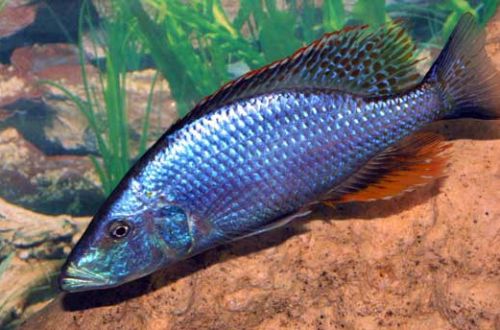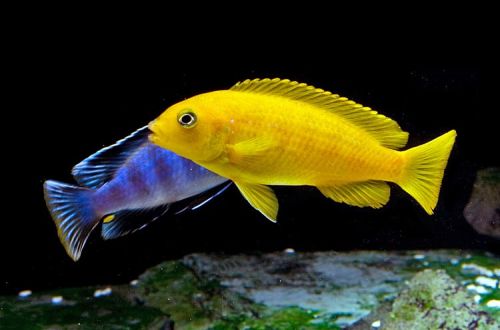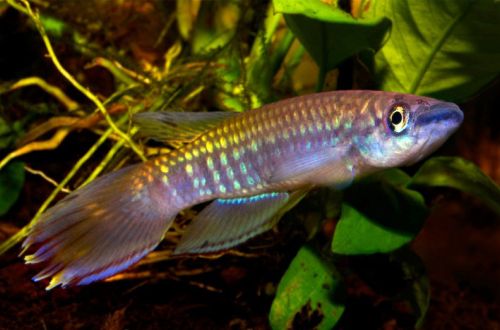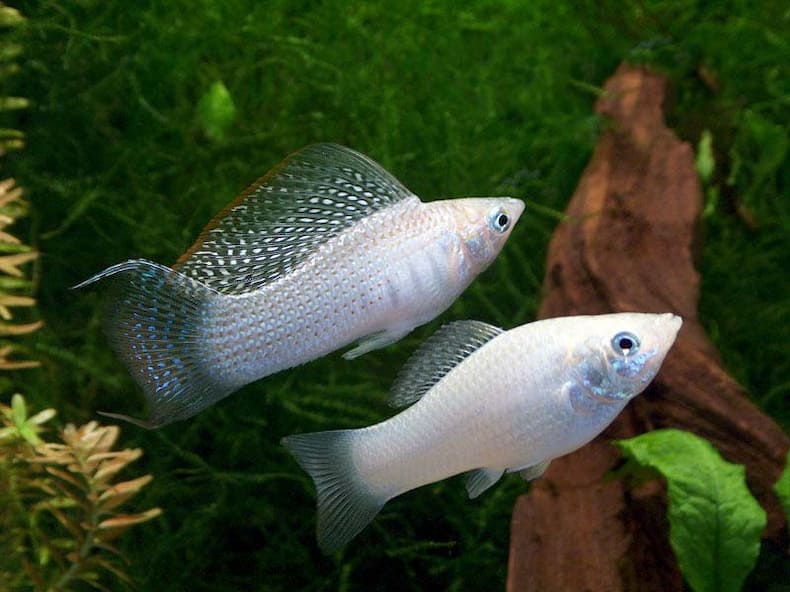
white mollies
White mollies, also known as “Snowflake”. The name is collective and applies equally to the breeding color variation of Mollies velifera or Mollies lapitina, as well as to their hybrids. It does not occur in the wild, it is bred artificially. The main feature of these fish is a solid solid silver color of the body. The fins are translucent with white dots.

Depending on the specific species (Latipinna or Velifera), the size of adults will vary, reaching up to 18 cm in length. Males are larger than females and have a large dorsal fin resembling a flag or sail.
Brief information:
- The volume of the aquarium is from 100–150 liters.
- Temperature – 21-26°C
- Value pH — 7.0–8.5
- Water hardness – medium to high hardness (15-35 GH)
- Substrate type – any
- Lighting – any
- Brackish water – acceptable in a concentration of 10-15 gr. salt per liter of water
- Water movement is weak
- The size of the fish is 12–18 cm.
- Nutrition – any feed with herbal supplements
- Temperament – peaceful
- Content alone, in pairs or in a group
Maintenance and care
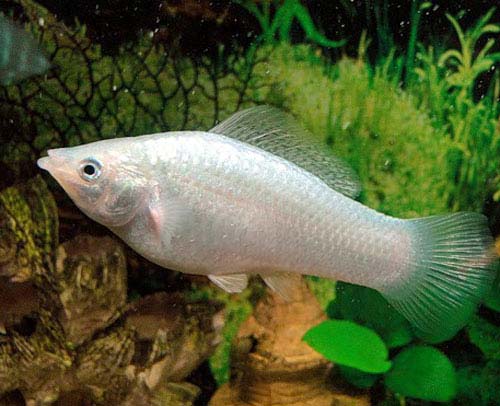
The optimal size of the aquarium for 3-4 fish starts from 150 liters. In this case, there are no restrictions on the maximum volume – the more, the better. An important element in the design of the aquarium are thickets of living plants. Not only do they serve as hiding places, they will also become part of the daily diet. For this reason, unpretentious fast growing species should be used, such as Naiads, Vallisneria, Hornworts, Elodea, Egeria Densa, as well as some aquatic mosses and ferns.
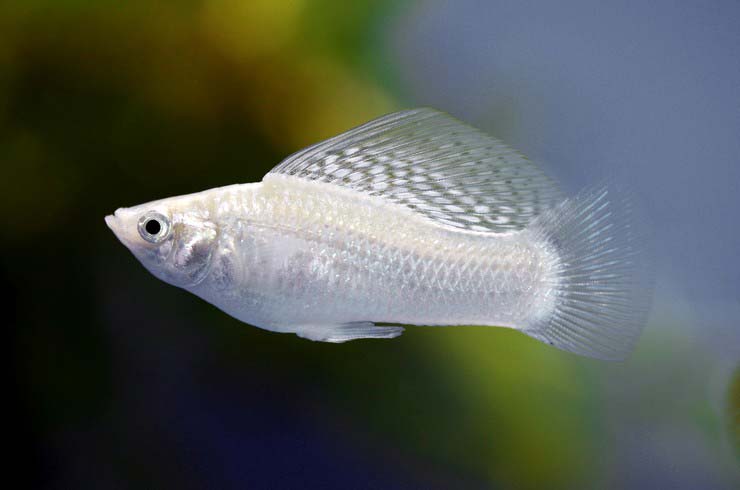
Snowflake mollies need warm water of medium to high total hardness at pH values close to neutral or slightly higher. In soft acidic water, the fish quickly weaken and become susceptible to various fungal and bacterial diseases.
Maintenance of an aquarium should include at least two main procedures – this is a weekly replacement of part of the water with fresh water and the removal of organic waste (food leftovers, excrement).
Food
The basis of the daily diet should be feed with a high content of plant components, the absence or lack of which affects the health of the fish. In particular, there is a violation in the development of the dorsal fin. A good choice for the beginner aquarist are specialty foods tailored to the needs of Mollies, available from many well-known manufacturers in the form of flakes, granules, etc.
Behavior and Compatibility
They get along well with other peaceful fish of comparable size, able to live in slightly alkaline conditions and high values of general hardness. Intraspecific relationships are built on the competition of males for the attention of females. Sometimes males are overly active, so it is recommended to purchase a group with a predominance of females.
Breeding and reproduction
Like most other viviparous species, the White Mollies gives birth to fully formed fry, bypassing the egg stage. Under favorable conditions, a new generation of fish can appear every 2 months. Parental instincts are not developed and juveniles are often eaten by adult fish. For the safety of the fry, it is advisable to transplant them into a separate aquarium with identical water conditions.
It is worth remembering that it is possible to cross with other varieties of Mollies and the appearance of mixed offspring.



